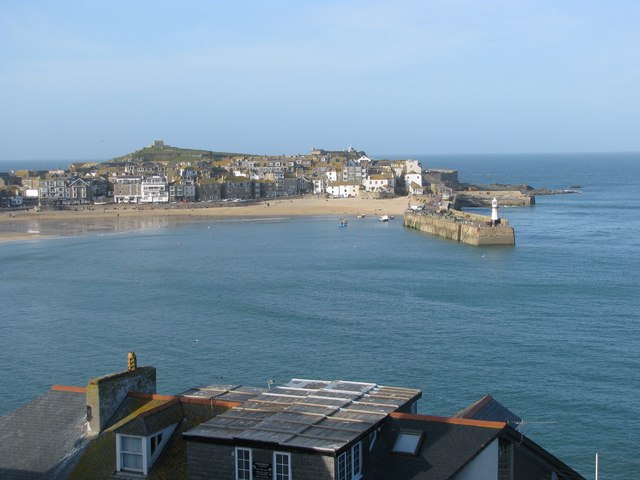When I was growing up in Penzance I used to love jumping on the No. 17 bus to St Ives for the day (incredibly, several decades later it is still the No. 17). In truth, St Ives was a bit on the tacky side in those days, not that it bothered me as a child. However, that certainly cannot be said now, with a host of smart restaurants and upmarket accommodation options gracing the town. I read somewhere recently that St Ives is the most expensive place to stay in Cornwall, even outstripping Padstein, though there are still some affordable options for those on a budget.
The main factor that propelled the town into the touristic stratosphere, apart from its stunning appearance, was probably the opening of the Tate St Ives, the Cornish outpost of the famous London art gallery, which occupies a position overlooking Porthmeor Beach and which boasts a top floor cafe with sea views. St Ives was the obvious choice of location for the gallery, given its long-standing artistic pedigree. The town, which has always been celebrated by artists for its exceptional light, has for years it been a magnet, and not only for painters. One of the most famous names from the art world to live in the town was the sculptress Barbara Hepworth. Although she died in 1975, her memory lives on in the form of the Barbara Hepworth Museum and Sculpture Garden, which comes under the umbrella of the Tate. There is much to inspire artists living in and visiting the town, especially in the old quarter bordering the harbour, where ancient whitewashed fishermen’s cottages line the winding alleyways. Needless to say, a large proportion of these cottages have been turned into holiday homes.
The other big draw for visitors to St Ives is the town’s fabulous beaches. As well as the above-mentioned Porthmeor Beach, the other main beach is Porthminster, just below the railway station. Both beaches are gloriously sandy, and both have smart restaurants for more upmarket grub as a change from the ubiquitous pasties and fish and chips. In between the two is the harbour, with another small beach, and then there is the ‘Island’, not actually an island but a small promontory with a chapel on top. The diminutive St Nicholas Chapel, also known as the Island Chapel, dates back to at least the 15th century, though no-one is sure when exactly. Seals and dolphins can sometimes be seen from the area near the coastwatch station on the Island. Further along the coast is Seal Island, visited by boat trips from the harbour. Back in the fishermen's quarter, the St Ives Museum, occupying a building once used for pilchard curing, is a treasure trove of memorabilia from the town's past. Another museum is the Capt Sir Richard Francis Burton Museum, dedicated to the exploits of a Victorian adventurer, explorer, spy and translator of the Kama Sutra.
As is to be expected from such a popular tourist town, there are a plethora of takeaways for those wanting to enjoy a bite to eat al fresco. However, I feel I must issue a word of warning for anyone tempted to indulge in takeaway food outside, particularly in the vicinity of the harbour: seagulls! The seagulls of St Ives must surely be the biggest in the country, and they have acquired an almost mythical reputation for their voracity and their brazenness in their quest for free grub. As an example, a few years ago I was wandering by the harbourside tucking into an ice cream. Suddenly a gull appeared from behind at great speed and snatched the ball of ice cream from the cone. I was just getting over the shock of that when another one came along and snatched the cone, leaving me with nothing. The only consolation was that it provided a good deal of entertainment for a little boy passing nearby with his dad.
St Ives hosts a number of festivals and other events throughout the year. For a list of events in the town follow this link.
Webcam view of the harbor.
Webcam view of the harbor.
Map of the area.
 | |
| St Ives Harbour over the rooftops - geograph.org.uk - 1206991. Photo by Sarah Charlesworth, via Wikimedia Commons. |
No comments:
Post a Comment